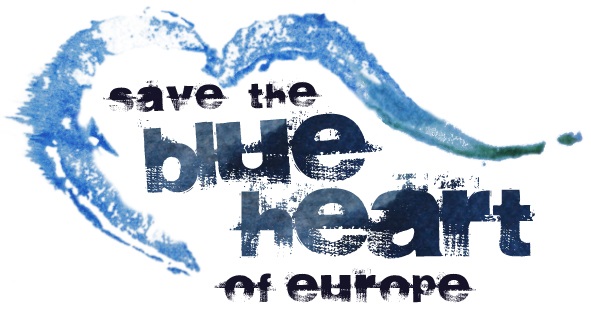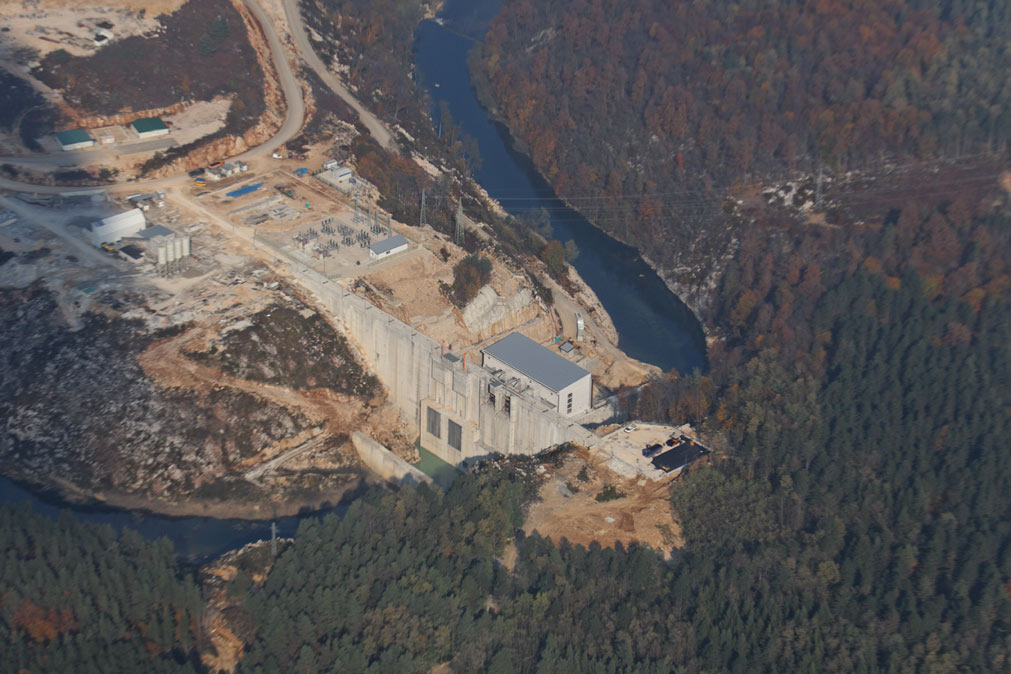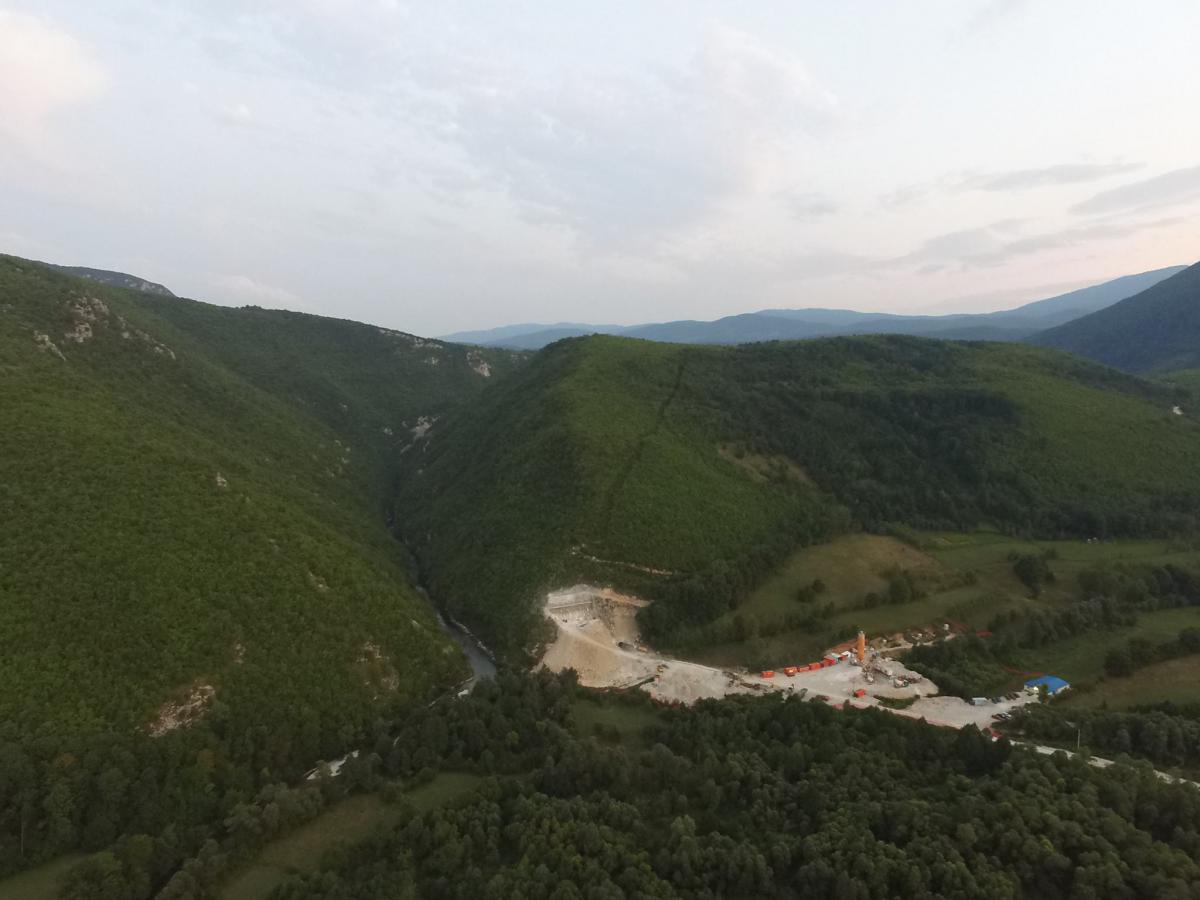 Save the Blue Heart of Europe - A campaign for the protection of Balkan Rivers
Save the Blue Heart of Europe - A campaign for the protection of Balkan Rivers
New Bankwatch study: European “green energy” funding for hydropower threatens pristine Balkan rivers
 Joint press release by CEE Bankwatch Network, EuroNatur and Riverwatch
Joint press release by CEE Bankwatch Network, EuroNatur and Riverwatch
Radolfzell, Vienna, Prague, December 11, 2015. A wave of hydropower development fuelled by European public funding and EU companies is endangering pristine river environments in the Balkans, finds a new study by CEE Bankwatch Network released today.
 The extensive analysis [1] shows that multilateral development banks [2] are playing a key role. The European Bank for Reconstruction and Development (EBRD), the European Investment Bank (EIB), and the World Bank's International Finance Corporation (IFC) have extended loans totalling EUR 818 million to no less than 75 hydropower projects, including 30 directly affecting protected areas like national parks, Natura 2000 sites, and Ramsar sites.
The extensive analysis [1] shows that multilateral development banks [2] are playing a key role. The European Bank for Reconstruction and Development (EBRD), the European Investment Bank (EIB), and the World Bank's International Finance Corporation (IFC) have extended loans totalling EUR 818 million to no less than 75 hydropower projects, including 30 directly affecting protected areas like national parks, Natura 2000 sites, and Ramsar sites.
The EBRD is the biggest investor in hydropower in the Balkans. The bank has supported a total of 51 plants with EUR 240 million, 21 of them inside protected areas, of which the vast majority are in Macedonia.
Most notably, the controversial Boskov Most project in Macedonia's Mavrovo National Park has secured an EBRD loan of EUR 65 million, despite the threat it poses to the only remaining habitat of the critically endangered Balkan lynx.
"Our analysis clearly shows that especially for the EBRD, but also the World Bank Group, financing hydropower projects in protected areas is the norm, not an exception. They need to finally start taking their internal safeguard policies seriously", says Pippa Gallop, Bankwatch's Research Co-ordinator and co-author of the study.
”The EBRD Board of Directors will be meeting in London on December 16, and we expect them to discuss how to stop the bank from bending its own policies,” added Klara Sikorova, Bankwatch's Senior Researcher and study co-author.
Of other public banks and funds, Germany's KfW and its subsidiary Deutsche Investitions- und Entwicklungsgesellschaft mbH (DEG) have been most active, with 8 hydropower plants, of which 4 are in protected areas in Macedonia and in Bosnia and Herzegovina.
Most projects are carried out by domestic companies, but of the projects involving foreign investment, Austria stands out: Austria's companies are involved in more than 40 dam projects, of which at least 20 are based in protected areas: Energy Eastern Europe Hydro Power GmbH (co-owner: Wien Energie) is involved in no less than 27 projects, of which 11 are in protected areas. Another Austrian company, the Kelag group, is involved in 13 projects, of which 9 are in protected areas, including the Medna Sana plant in Bosnia and Herzegovina, which is strongly opposed by local people.
“It's unacceptable that companies from Austria or other western countries are building hydropower plants in the Balkans that they would not consider in their home countries", says Ulrich Eichelmann of Riverwatch.“The good news is that the majority of the projects we identified are still on the drawing board and we will try to save as many of these beautiful Balkan rivers as possible,” he added.
“Hydropower developments are in clear contradiction to the objectives of protected areas. We expect that at least protected areas are accepted as no-go-areas and no further hydropower plants will be developed there,” says Gabriel Schwaderer, Executive Director of the EuroNatur Foundation.
Find here the study and the accompanying database. The study was commissioned as part of the campaign "Save the Blue Heart of Europe"
Find the info graphics: Pristine Balkan rivers threatened by European "green energy" funding for hydropower
Find the photo story: Troubled beauty: How pristine rivers in the Balkans are in danger of being dismembered by hydropower installations.
For more information contact:
Pippa Gallop
Research Co-ordinator
CEE Bankwatch Network
pippa.gallop@bankwatch.org
+385 99 755 9787
Klara Sikorova
Senior Researcher
CEE Bankwatch Network
klara.sikorova@bankwatch.org
+420 274 822 150, Ext. 27
Ulrich Eichelmann
CEO Riverwatch
ulrich.eichelmann@riverwatch.eu
+43 676 6621512
Gabriel Schwaderer
EuroNatur Executive Director
gabriel.schwaderer@euronatur.org
+49 7732 927210
Notes to editors:
[1] The study covers Albania, Bosnia and Herzegovina, Bulgaria, Croatia, the Vjosa/Aoos part of Greece, Kosovo, Macedonia, Montenegro, Serbia and Slovenia. It examines hydropower plants which have either been built in the last ten years or are now being planned.
[2] The EBRD, European Investment Bank and the World Bank group institutions (International Financial Corporation, International Bank for Reconstruction and Development, International Development Agency and Multilateral Investment Guarantee Agency).
[3] A total of 1355 hydropower plants were identified as being planned now or having entered operation since 2005. Most of the plants are only in the planning stage so most likely do not have financing arranged yet, while others are financed by commercial bank loans which cannot usually be traced.
'Financing sources' include loans, guarantees, grants for project preparation/advisory services.
'Plants' refers to each separate hydropower facility, so one loan or guarantee may cover several plants but still be classed as a single 'project' by a financier.
MEDIA REACTION
The Guardian (December 11, 2015): Major banks put up nearly €1bn for controversial Balkan dams, says report